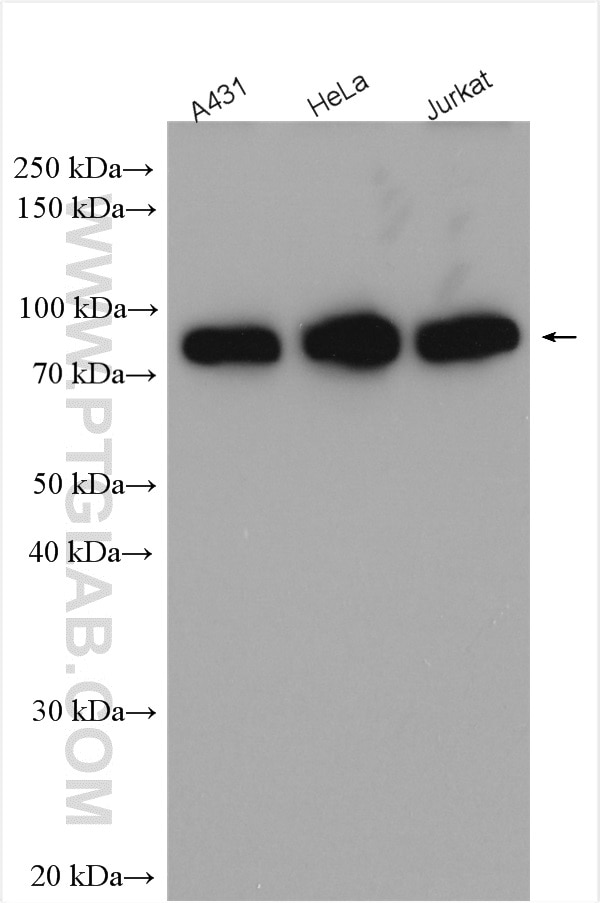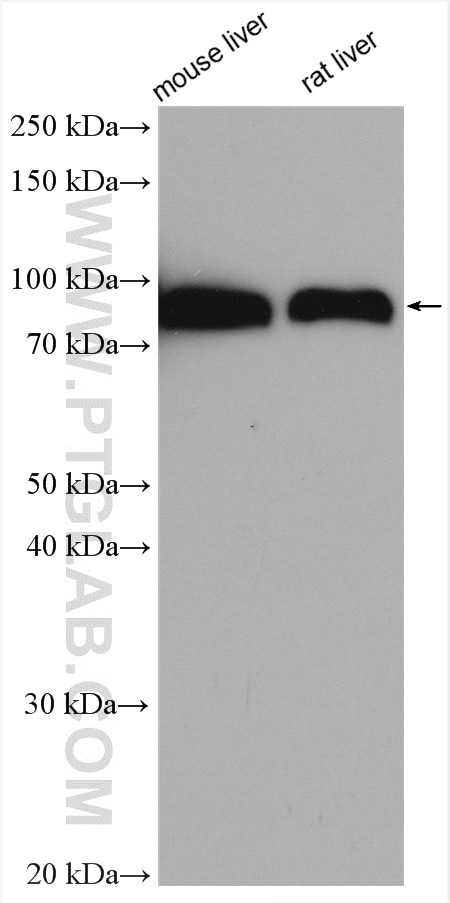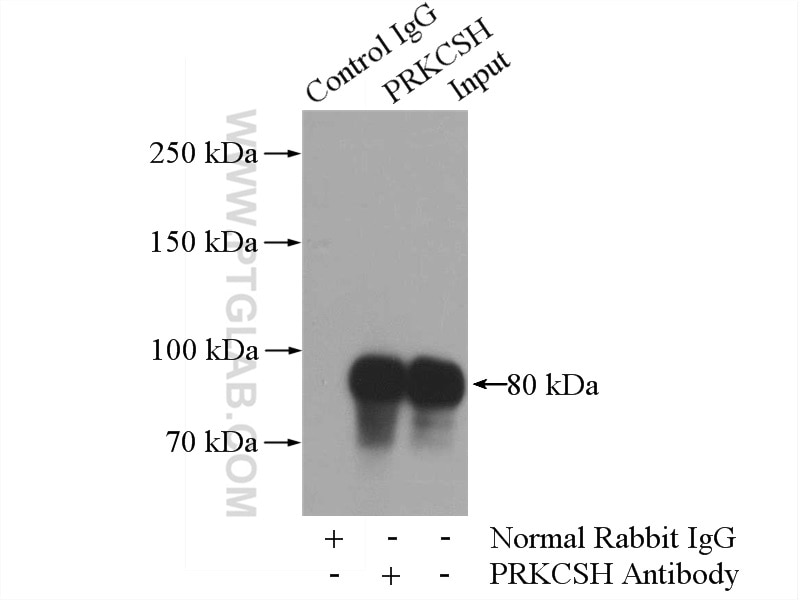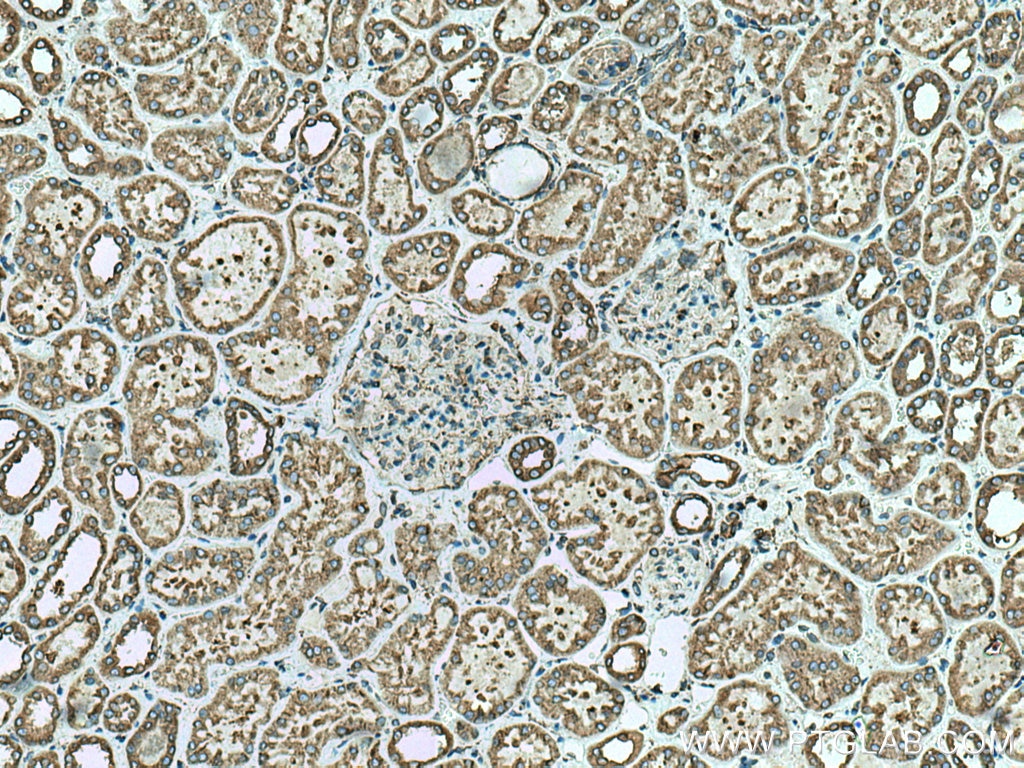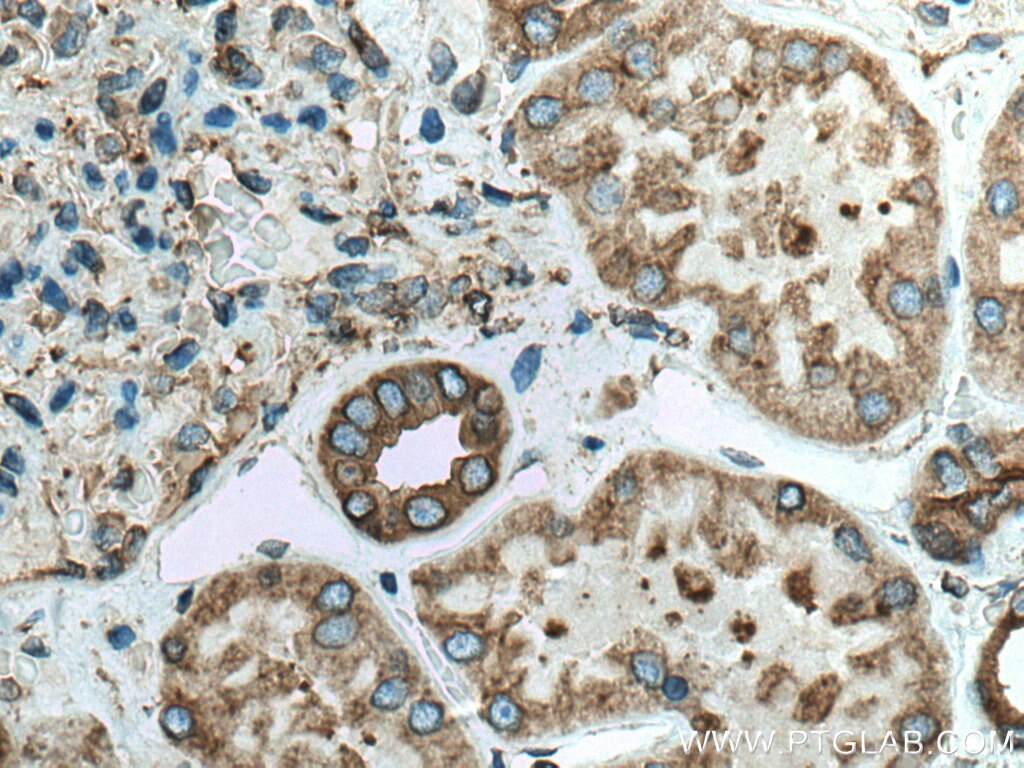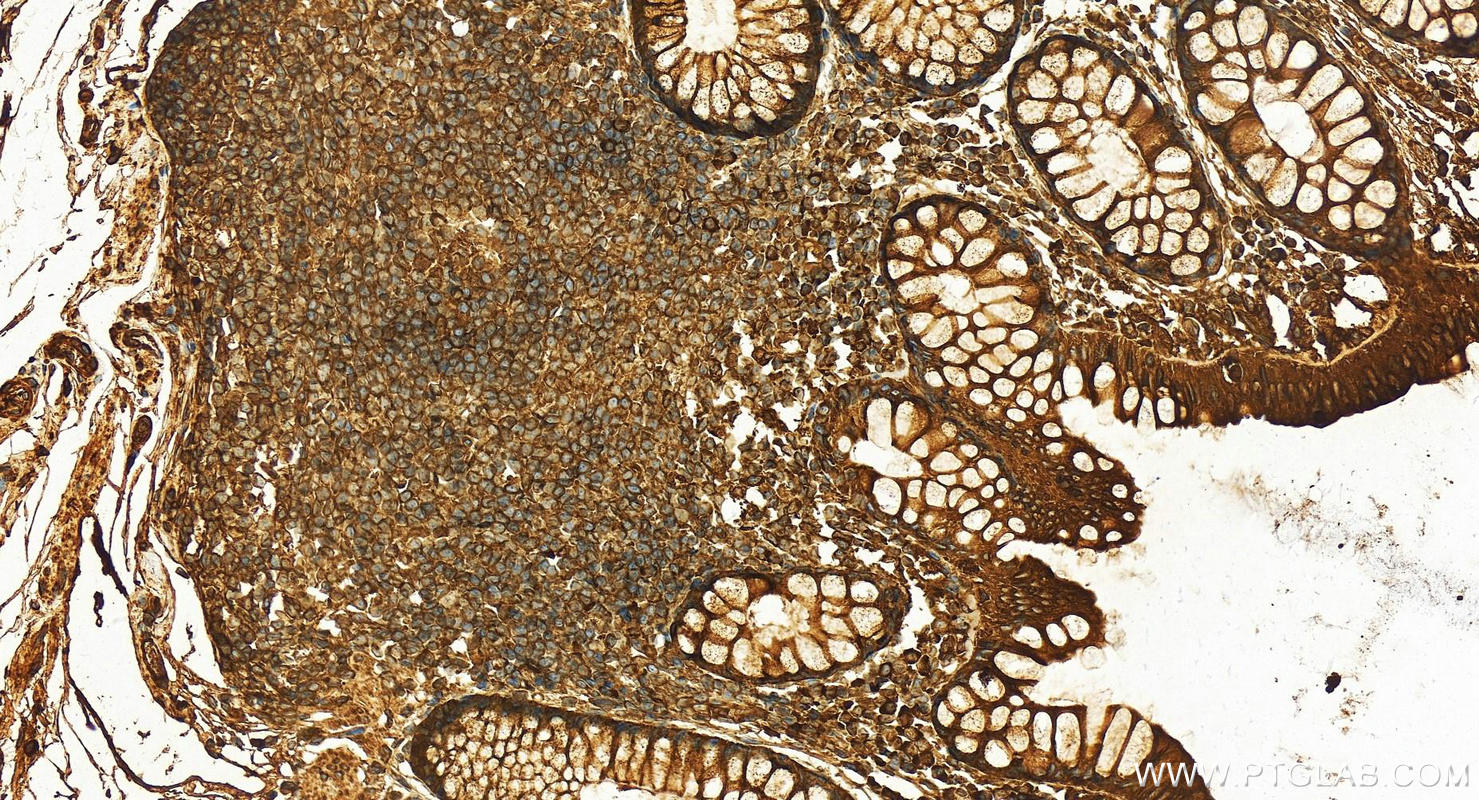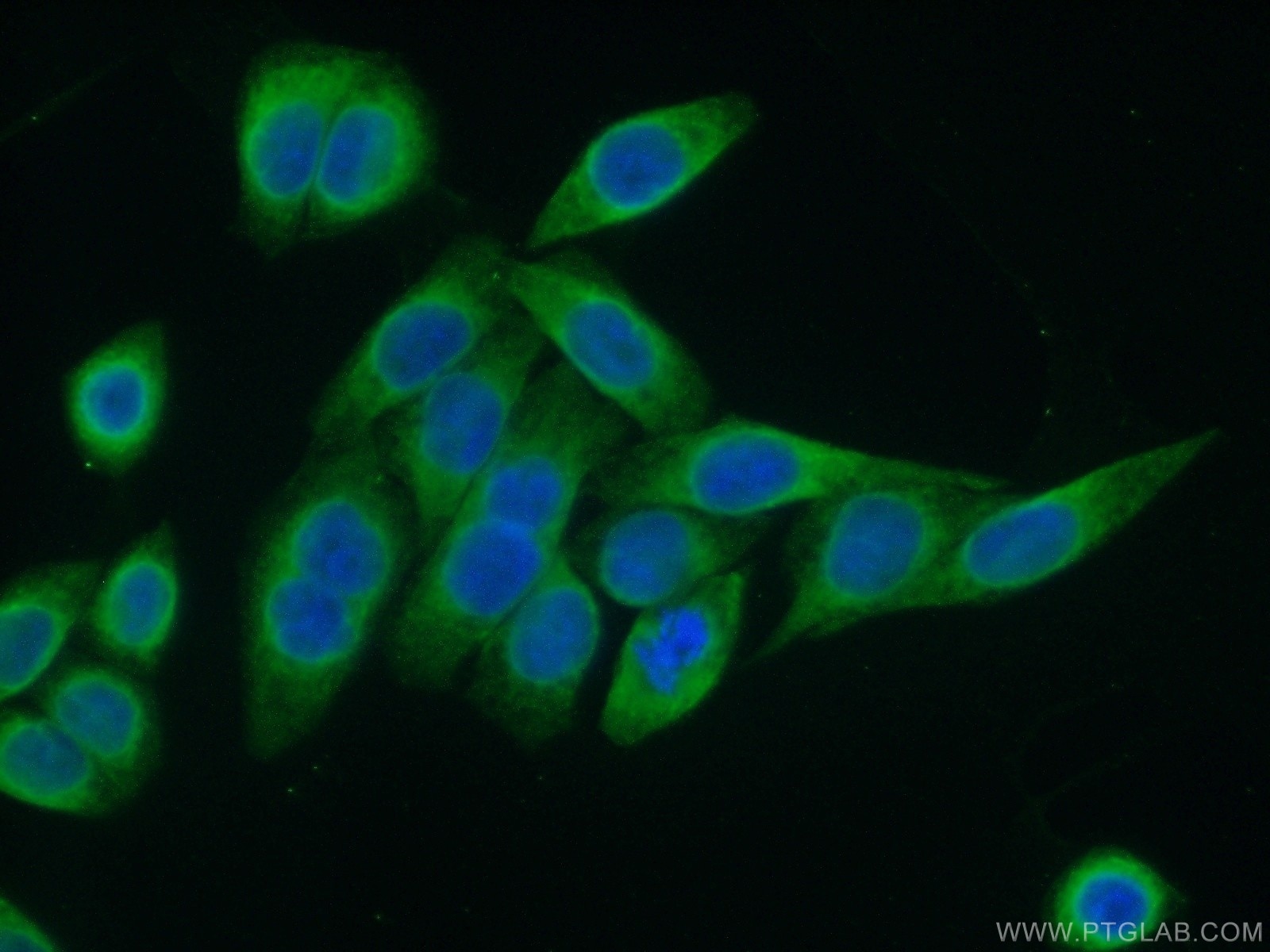Tested Applications
| Positive WB detected in | A431 cells, mouse liver tissue, rat liver tissue, HeLa cells, Jurkat cells |
| Positive IP detected in | HeLa cells |
| Positive IHC detected in | human kidney tissue, human normal colon Note: suggested antigen retrieval with TE buffer pH 9.0; (*) Alternatively, antigen retrieval may be performed with citrate buffer pH 6.0 |
| Positive IF/ICC detected in | HeLa cells |
Recommended dilution
| Application | Dilution |
|---|---|
| Western Blot (WB) | WB : 1:2000-1:8000 |
| Immunoprecipitation (IP) | IP : 0.5-4.0 ug for 1.0-3.0 mg of total protein lysate |
| Immunohistochemistry (IHC) | IHC : 1:200-1:1600 |
| Immunofluorescence (IF)/ICC | IF/ICC : 1:50-1:500 |
| It is recommended that this reagent should be titrated in each testing system to obtain optimal results. | |
| Sample-dependent, Check data in validation data gallery. | |
Published Applications
| KD/KO | See 1 publications below |
| WB | See 6 publications below |
| IHC | See 3 publications below |
| IF | See 1 publications below |
Product Information
12148-1-AP targets PRKCSH in WB, IHC, IF/ICC, IP, ELISA applications and shows reactivity with human, mouse, rat samples.
| Tested Reactivity | human, mouse, rat |
| Cited Reactivity | human, mouse, rat |
| Host / Isotype | Rabbit / IgG |
| Class | Polyclonal |
| Type | Antibody |
| Immunogen |
CatNo: Ag2796 Product name: Recombinant human PRKCSH protein Source: e coli.-derived, PGEX-4T Tag: GST Domain: 157-506 aa of BC013586 Sequence: TVKEEAEKPEREAKEQHQKLWEEQLAAAKAQQEQELAADAFKELDDDMDGTVSVTELQTHPELDTDGDGALSEAEAQALLSGDTQTDATSFYDRVWAAIRDKYRSEALPTDLPTPSAPDLTEPKEEQPPVPSSPTEEEEEEEEEEEEAEEEEEEEDSEEAPPPLSPPQPASPAEEDKMPPYDEQTQAFIDAAQEARNKFEEAERSLKDMEESIRNLEQEISFDFGPNGEFAYLYSQCYELTTNEYVYRLCPFKLVSQKPKLGGSPTSLGTWGSWIGPDHDKFSAMKYEQGTGCWQGPNRSTTVRLLCGKETMVTSTTEPSRCEYLMELMTPAACPEPPPEAPTEDDHDEL Predict reactive species |
| Full Name | protein kinase C substrate 80K-H |
| Calculated Molecular Weight | 80 kDa |
| Observed Molecular Weight | 80 kDa |
| GenBank Accession Number | BC013586 |
| Gene Symbol | PRKCSH |
| Gene ID (NCBI) | 5589 |
| RRID | AB_2253107 |
| Conjugate | Unconjugated |
| Form | Liquid |
| Purification Method | Antigen affinity purification |
| UNIPROT ID | P14314 |
| Storage Buffer | PBS with 0.02% sodium azide and 50% glycerol, pH 7.3. |
| Storage Conditions | Store at -20°C. Stable for one year after shipment. Aliquoting is unnecessary for -20oC storage. 20ul sizes contain 0.1% BSA. |
Background Information
PRKCSH encodes the beta-subunit of glucosidase II, an N-linked glycan-processing enzyme in the endoplasmic reticulum (ER). This protein is an acidic phospho-protein known to be a substrate for protein kinase C. Defects in PRKCSH are a cause of an autosomal dominant polycystic liver disease (PCLD). Glucosidase II is an ER-localized enzyme that contains α and β subunits (Glucosidase IIα and Glucosidase IIβ) which form a defined heterodimeric complex.
Protocols
| Product Specific Protocols | |
|---|---|
| IF protocol for PRKCSH antibody 12148-1-AP | Download protocol |
| IHC protocol for PRKCSH antibody 12148-1-AP | Download protocol |
| IP protocol for PRKCSH antibody 12148-1-AP | Download protocol |
| WB protocol for PRKCSH antibody 12148-1-AP | Download protocol |
| Standard Protocols | |
|---|---|
| Click here to view our Standard Protocols |
Publications
| Species | Application | Title |
|---|---|---|
Exp Mol Med PRKCSH contributes to TNFSF resistance by extending IGF1R half-life and activation in lung cancer | ||
Nat Commun PRKCSH contributes to tumorigenesis by selective boosting of IRE1 signaling pathway.
| ||
J Cell Biol Competition for calnexin binding regulates secretion and turnover of misfolded GPI-anchored proteins | ||
Exp Physiol AGEs-RAGE axis mediates myocardial fibrosis via activation of cardiac fibroblasts induced by autophagy in heart failure. | ||
Cell Rep Spatial region-resolved proteome map reveals mechanism of COVID-19-associated heart injury. | ||
Biochim Biophys Acta Hepatocystin/80K-H inhibits replication of hepatitis B virus through interaction with HBx protein in hepatoma cell. |

